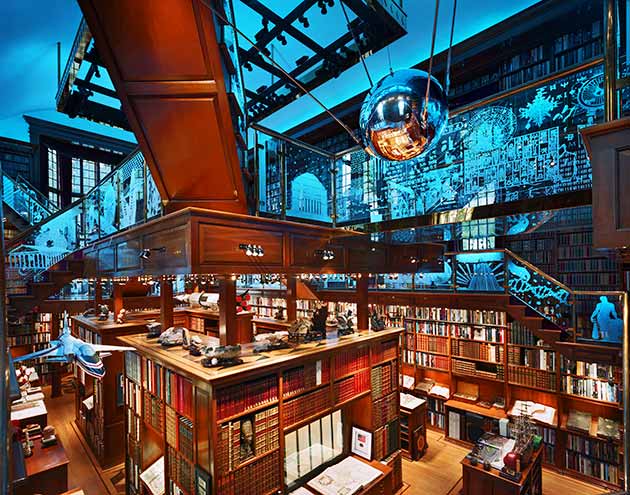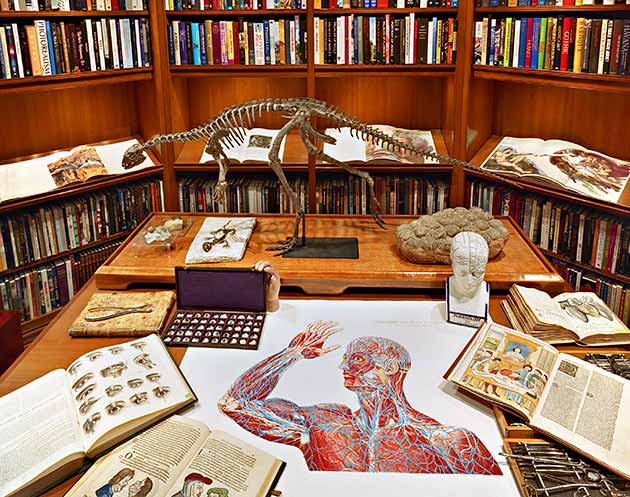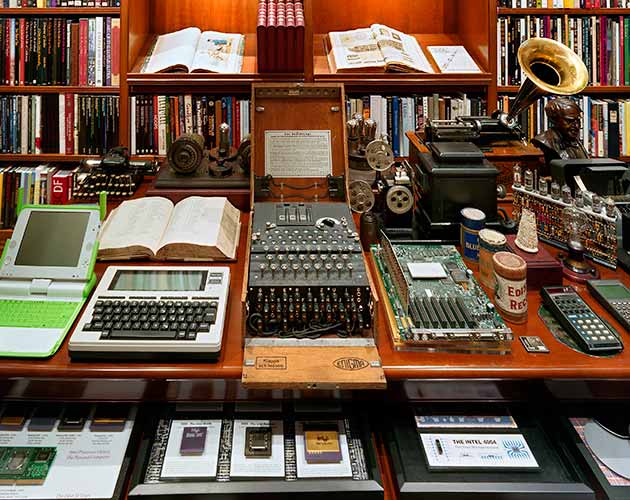
Jay Walker's house was constructed specifically to accommodate his massive library. To create the space, which was constructed in 2002, Walker (the 52-year-old Internet entrepreneur and founder of Walker Digital) and architect Mark Finlay first built a 7-foot-long model. Then they used miniature cameras to help visualize what it would be like to move around inside. 
In a conscious nod to M. C. Escher (whose graphics are echoed in the wood tiling), the labyrinthine platforms seem to float in space, an illusion amplified by the glass-paneled bridges connecting the platforms. Walker commissioned decorative etched glass, dynamic lighting, and even a custom soundtrack that sets the tone for the cerebral adventures hidden in this cabinet of curiosities. "I said to the architect, 'Think of it as a theater, from a lighting and engineering standpoint,'" Walker says. "But it's not a performance space. It's an engagement space."

"What's so wonderful about our knowledge of the human body is how remarkably constrained it has been over time," Walker says. In the center of the table sits the Anatomia universa, an early-19th-century medical masterwork by the Italian illustrator Paolo Mascagni. At front right is a field tool kit for Civil War surgeons. Grasping the box of prosthetic eyeballs at left is the original "Thing" hand from the TV show The Addams Family, signed by the cast. In front of the 19th-century phrenological bust is a book, from about 1500, containing the first published illustrations of surgery on humans. "Pre-anesthesia, of course" Walker says. At the rear are a 300 million-year-old trilobite fossil, a raptor skeleton and a clutch of fossilized dinosaur eggs.

A brand-new One Laptop per Child XO, far left, sits next to a relatively ancient RadioShack TRS-80 Model 100. In back, a 1911 typewriting machine and a 1909 Kent radio. The large contraption at center is the Nazis' supposedly unbreakable Enigma code machine. The book to its left is a copy of Johannes Trithemius' 1518 Polygraphiae, a cryptographic landmark. On the right is an Apple II motherboard signed by Woz. An Edison kinetoscope sits beside an 1890 Edison phonograph (along with three of the wax cylinders it uses for recording). Nearby is a faithful copy of Edison's lightbulb. The gadget with the tubes is an IBM processor circa 1960. In front of it stands a truly ancient storage device, a Sumerian clay cone used to record surplus grain.
:read the wired article and see more photos here; wired


















































